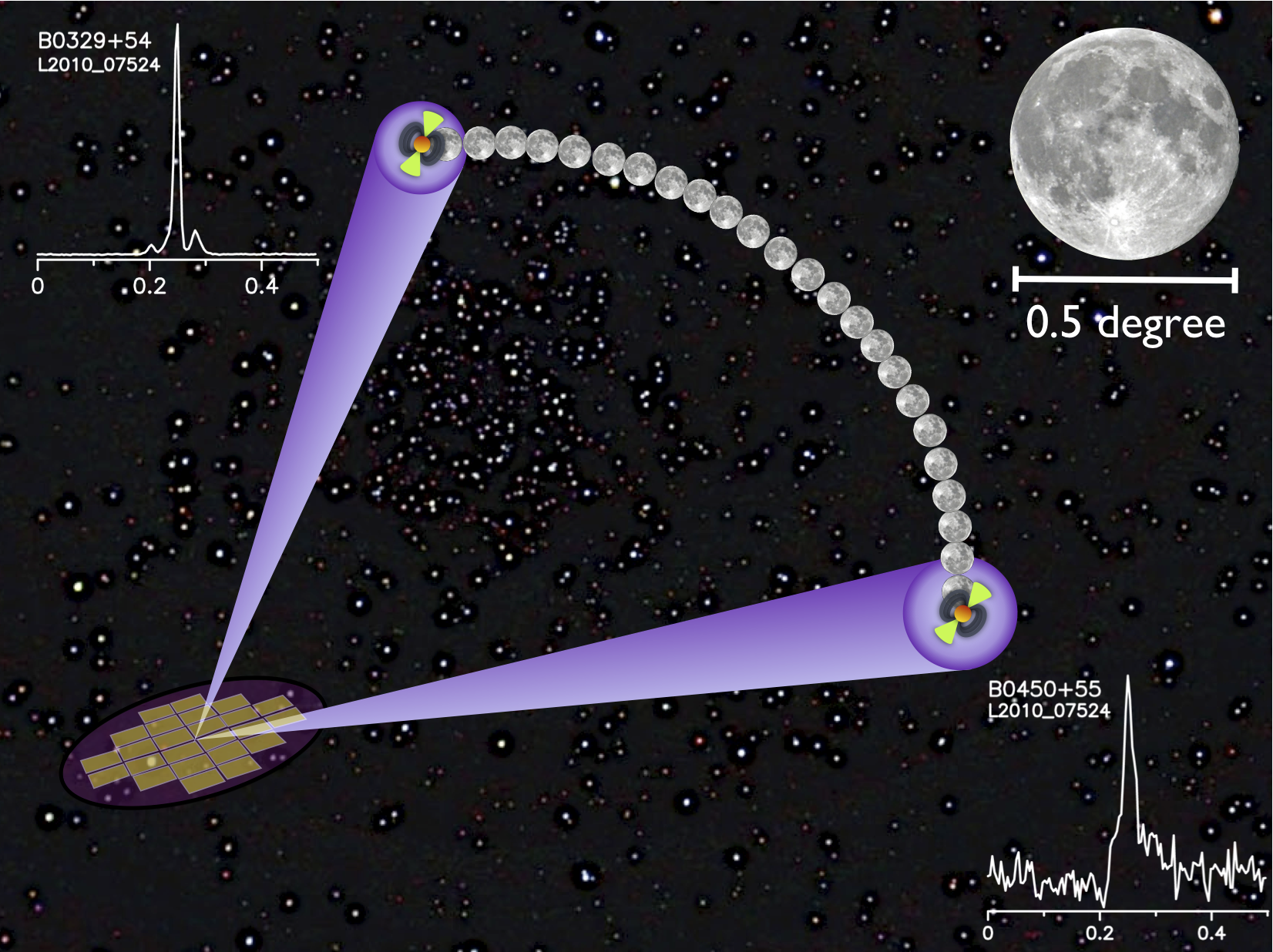Daily Image
21-07-2010Observing with Multiple LOFAR Station Beams (or "Twee vliegen in één klap")
| Submitter: | Jason Hessels on behalf of the LOFAR Pulsar Working Group |
| Description: | Unlike conventional radio telescopes, LOFAR stations can look in multiple directions at the same time by distributing the total observing bandwidth between multiple "beams" (fields-of-view) simultaneously. This makes it possible to monitor a large fraction of the sky at once and to observe multiple known sources during one observation. As such, the prospects for all-sky surveys and monitoring for rare transient events are very exciting. To demonstrate this impressive functionality, we observed two widely separated pulsars simultaneously. Pulsars B0329+54 and B0450+55 are separated by close to 12 degrees on the sky, or, to put it another way, by roughly 24 times the width of the full moon. Pointing the high-band tile beam directly between the two pulsars, we formed two stations beams and centered one on each of the two pulsars. Tracking the sources for 30 minutes, both the very bright B0329+54 (the brightest pulsar in the northern sky) and the much fainter B0450+55 were clearly detected. We plan to repeat this type of observation using more beams on more sources. With the LOFAR low-band antennas, each of which can effectively see the "whole" sky, it will be possible to form station beams that are even more widely separated. |
| Copyright: | ASTRON/LOFAR |
| Tweet |  |
